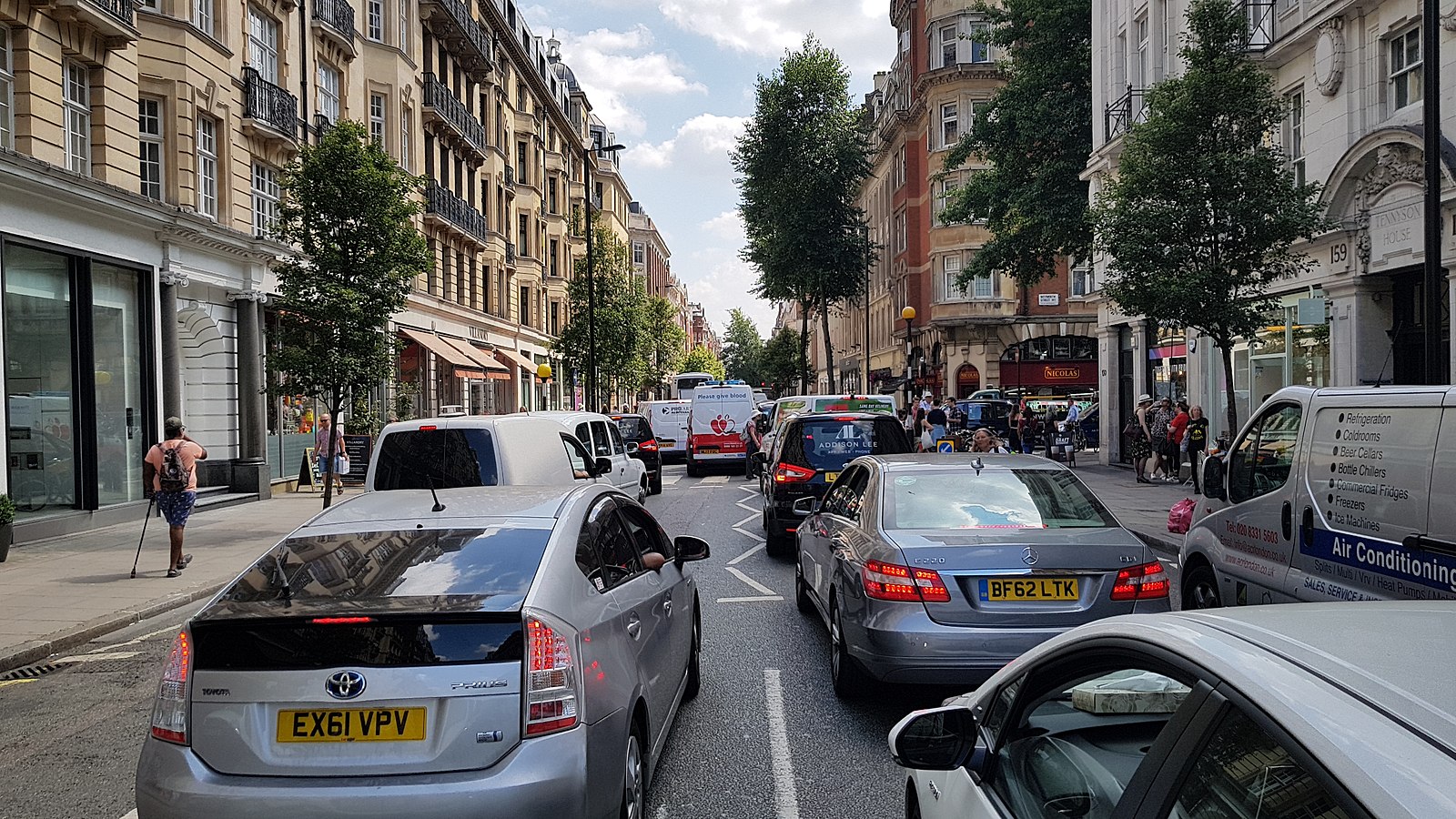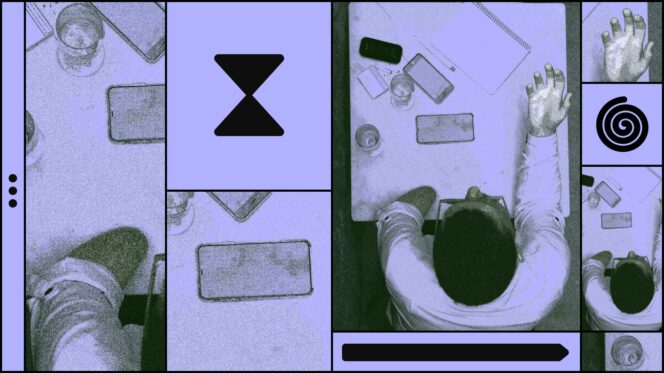Stop Using Disabled People As an Excuse Not to Ban Cars in Cities

As petrol prices soar to 165p per litre, the Ukraine crisis has made our unhealthy dependence on fossil fuels starkly apparent and given renewed impetus for a rapidly accelerated green transition. Banning cars in cities is an obvious place to start.
Yet car lobbies, along with some in government and civil society, protest automobile abstinence, citing disabled people. “How will people in wheelchairs get around if we abolish cars?” they plead. I’m a double amputee and frequent wheelchair user, and I find this faux sympathy repugnant.
Disabled people should be asked what we want, not be unilaterally drafted in by petrolheads. A recent report from the climate change charity Possible did just that, asking dozens of people to reimagine the built environment in light of climate realities.
The Possible study adopted the social model of disability, a worldview developed by disabled people which says that disability arises from physical and social barriers in the world, rather than physical or psychological impairments. In the UK, people with mobility-related disabilities take on average a third fewer trips than the rest of the population. This isn’t because our bodies prevent us from travelling more, but because our transport systems do. In other words, the social model prompts us to focus not on how people are disabled, but how the world is disabling.
Admittedly, the idea of a no-car city was unpopular with the Possible study’s interviewees. But so too was the idea of a low-car city that didn’t explicitly include disabled people. The conversation only shifted when it centred disabled peoples’ requirements, separating transport “needs” from transport “wants”. Reducing car use is critical, the interviewees agreed, but non-disabled people should be responsible for the bulk of the change, leaving space on the road for those who don’t have a choice. As one participant put it: “If we could get more people who are able to use public transport using public transport, then that could [leave] town centres … open for disabled people to access it by whatever means.”
This is not to say that disabled people are necessarily car users. In fact only 55% of disabled people in England aged 17-64 hold a full driving licence, compared with 83% of non-disabled people (though disabled people are much more likely to travel as passengers in a car or taxi). Not only would reducing unnecessary traffic be good for disabled people who must use a car, then, it would also improve the lives of those who don’t, be they disabled or not.
Transitioning to a world in which only those who need to use private transportation in cities won’t happen overnight. Instead, it will require removing many of the most disabling factors in the current transportation system, including pavement quality; the accessibility and quality of public transport; and antiquated roads and pavements that leave no room for alternative modes of transport like trikes and mobility scooters. In the same way that improving cycle infrastructure and reduced road traffic during the pandemic upped bike traffic (more than doubling in lots of areas), improving alternatives to driving across the board could have a drastic effect.
Badly maintained pavements and a lack of dropped curbs can make easy journeys impossible for wheelchair users. One participant in the Possible study spoke about needing her husband to check routes before she attempted them just to make sure she wouldn’t get stuck (astonishingly in a time of tech dominance, there’s no app that can warn you of pavement quality in advance). The wrong incline, surface texture, curb or camber – a word I didn’t know until I found myself rolling into traffic in a wheelchair because of pavement slopes – is often the difference between going out and staying home. Smooth, accessible pavements could go a long way to allowing disabled people to mobilise independently and, in some cases, without the need for cars. To give you an idea of how feasible this would be, the amount of money that the government budgeted just for potholes last year (£500m) could pay for 840,000 dropped curbs.
Accessible public transport is the next piece of the puzzle. Take the tube, where just a fraction of stops are meaningfully accessible – I can get black grease all over my hands from having to lean on the outside of tube trains, but I usually don’t try in a wheelchair for fear of getting stuck. This is improving, largely helped by the tireless work of campaigners like Katie Pennick and Alan Benson of Transport for All. But things are not moving fast enough: according to one Disabled Person’s Organisation spokesperson quoted in the Possible report, at the current rate of change, the national train network will not be fully accessible until 2070.
We need a rapid overhaul of how transport operates in the urban context and disabled people need to be meaningfully included in that process. At present, they are not: the UK government plans to ban the sale of new petrol and diesel cars by 2030 and demand all new cars be zero-emission at the tailpipe by 2035, but if the same number of cars remain on the roads, the built environment will still be disabling to us (not to mention destructive for the environment: while a typical medium-sized car will create around 24 tonnes of CO2 during its life cycle, an electric vehicle still produces around 18 tonnes).
Massachusetts Institute of Technology assistant professor Catherine D’Ignazio has said that “we are designing cities that work really well for elite white men and not very well for the rest of us.” Her statement reminds me of the battle between the New York city planner Robert Moses and the urbanist and activist Jane Jacobs in the mid-20th century. Their fight was one between Moses’ utilitarian industrialism and what Jacobs termed the “teeming city”. While he bulldozed seemingly disorganised dwellings to instal gridded streets, highways and skyscrapers, she organised (largely successful) community campaigns for and wrote extensively about the need for mixed-use neighbourhoods that would cater to people of all abilities, ethnicities and socio-economic classes, imagining cities as playgrounds for collective enjoyment. We all know whose vision prevailed: in London, where I live, road surfaces alone take up 111 sq kilometres, equivalent to the size of Jersey.
Accessibility is not just about meeting the needs of disabled people, but about creating joyful environments for all. Wider pavements, more open shared spaces and public facilities, places to rest, increased investment in pedestrianisation and private and public transport infrastructure would benefit everyone in the city. Reduced traffic would help disabled and non-disabled pedestrians feel safer. Parking spaces could become small gardens or accessible toilets, a necessity for disabled people planning excursions along with other neglected citizens, including women, children, delivery workers and homeless people.
We have a chance, forced upon us by circumstance, to realign our priorities when it comes to building our cities. Doing so successfully will require a devolved and democratic process. As Jacobs put it: “The surest way to arrange that the status quo is not going to be disturbed … is to centralize responsibility for defining it and for administering funds directed to its solutions.”In addition to Possible’s recommendations, local authorities must to establish new, participatory bodies to think about how cities of the future will function. Blueprints for this already exist, including the recently launched commission for economic renewal in the London borough of Camden (chaired by Professor Marianna Mazzucato, author of The Entrepreneurial State) and the oft-cited participatory renewal of Frome, Somerset, the birthplace of Flatpack Democracy.
For too long, urban solutions to climate disaster have been left to a handful of people pushing incremental change. To survive, the city must be transformed – by and for us all.
Charlie Hertzog Young is a researcher and writer, focusing on climate change, mental health and new economics.


